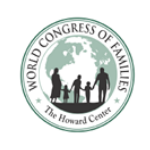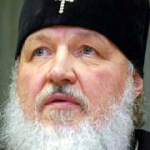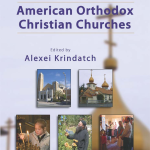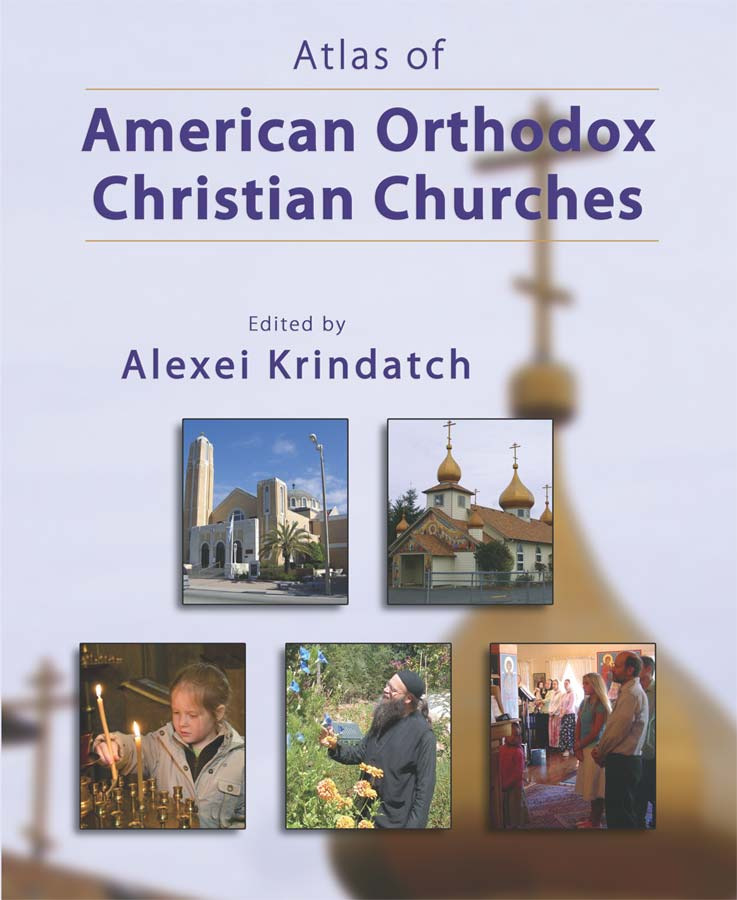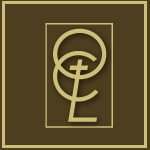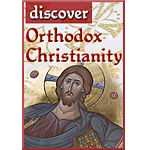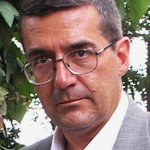
As a long-time upholder of friendship and alliance between the Roman Catholic and Orthodox traditionalists, I am disheartened by Pope Benedict XVI’s uncritical portrayal of Archbishop Alojzije Stepinac (1898-1960) as a saintly figure during his visit to Croatia earlier this week.
In a homily at the Zagreb Cathedral the Pontiff called Stepinac “a fearless pastor and an example of apostolic zeal and Christian fortitude, whose heroic life continues today to illuminate the faithful of the Dioceses of Croatia, sustaining the faith and life of the Church in this land”:
The merits of this unforgettable bishop are derived essentially from his faith: in his life, he always had his gaze fixed on Jesus, to whom he was always conformed, to the point of becoming a living image of Christ, and of Christ suffering. Precisely because of his strong Christian conscience, he knew how to resist every form of totalitarianism, becoming, in a time of Nazi and Fascist dictatorship, a defender of the Jews, the Orthodox, and of all the persecuted, and then, in the age of communism, an advocate for his own faithful, especially for the many persecuted and murdered priests.
The historical record presents a more nuanced and ambivalent picture of Stepinac. The leading American historian of the Balkans, H. James Burgwyn, notes that, as “a vocal nationalist Croat,” Stepinac “conferred respectability on the Ustaša regime by his immediate approval of the new government… Without the urging of prelates and priests, many Croats, who otherwise would have turned their backs on the Ustaša atrocities, allowed themselves to be co-opted by Pavelic’’s regime” (H. James Burgwyn. Empire on the Adriatic: Mussolini’s Conquest of Yugoslavia, 1941-1943. New York: Enigma Books, 2005, pp. 52-53).
Specifically, on April 28, 1941, Archbishop Stepinac issued a pastoral letter in which he called on the clergy to take part in the “exalted work of defending and improving the Independent State of Croatia,” the birth of which “fulfilled the long-dreamed-of and desired ideal of our people” (Katolic(ki List, April 28, 1941). The pastoral letter was read in every Croatian parish and over the radio.
The clergy hardly needed the Archbishop’s encouragement, however. This phenomenon was soon noted by various Axis officials in the field. The German Security Service (SD) expert for the Southeast, Dr. Wilhelm Hoettl, noted that forced conversions from Orthodoxy to figured prominently in the clerical agenda from the outset: “Since being Croat was equivalent to confessing to the Catholic faith, and being Serb followed the profession of Orthodoxy, they now began to convert the Orthodox to Roman Catholicism under duress. Forced conversions were actually a method of Croatization” (Walter Hagen. The Secret Front: the Story of Nazi Political Espionage. London: Weidenfeld and Nicholson, 1953, p. 238. ‘Hagen’ was Hoettl.).
A devout and austere man, distressed by the deportations and mass killing around him, “Stepinac was no admirer of the Nazi and Fascist creeds beyond their authoritarian ideas and anti-Communism,” Burgwyn notes, but for over two years “he refrained from open criticism of Pavelic’’s blood-soaked rule and kept silent over the Ustaša murders of the Orthodox” (Burgwyn, op. cit. p. 53).
In what is cited by his apologists as a bold move, Stepinac once declared from pulpit that “all men and races are children of God,” specifically mentioning “Gypsies, Black, European, or Aryan”—but no Serbs. He did not mention the main victims of the regime by name—not once—for the rest of the war. After more than two years of Ustaša rule, on October 31, 1943, Stepinac stated in a sermon that “there are people who accuse us of not having taken action against the crimes committed in different regions of our country. Our reply is… we cannot sound the alarm, for every man is endowed with his own free will and alone is responsible for his acts. It is for this reason that we cannot be held responsible for some in the ecclesiastical ranks.” Under the circumstances this view amounted to an abdication of moral responsibility.
No less contentiously, Stepinac stated at the Council of Croatian Bishops that a “psychological basis should be created among the Orthodox followers” for the conversions: “They should be guaranteed, upon conversion, not only life and civil rights, but in particular the right of personal freedom and also the right to hold property.” He did not say, or appear to think, that those rights were due to the unconverted Serbs. (Over a year before Yugoslavia’s collapse, on January 17, 1940, Stepinac wrote in his diary: “The most ideal thing would be if the Orthodox Serbs were… to bend their heads before Christ’s Vicar, our Holy Father [the Pope].”)
Stepinac’s failing was primarily in his timid and reluctant attitude to those members of the Croatian clergy who openly identified with the Ustaša regime, or even became supporters of and participants in the genocide.
When the anti-Serb and anti-Jewish racial laws of April and May 1941 were enacted, the Catholic press welcomed them as vital for “the survival and development of the Croatian nation” (Hrvatska Straža, May 11, 1941)—yet Stepinac did not intervene. On the subject of those laws, the Archbishop of Sarajevo Ivan Šaric’ declared that “there exist limits to love” and declared it “stupid and unworthy of Christ’s disciples to think that the struggle against evil could be waged in a noble way and with gloves on.” Stepinac did not reprimand him. Those were the early days of the Ustaša regime, however, before the slaughter started in earnest. Later, “when the Ustaša launched their massacres, the Holy See took no overt measures to bring them to a halt” (Bergwyn, op. cit. p. 54).
This need not have been so:
Because Pavelic’ so eagerly sought Vatican diplomatic recognition and led a movement of zealous Catholics, Pius had the leverage to force Pavelic’ and the Ustaša to stop murdering Serbs and Jews. [Pavelic’ requested recognition immediately after arriving in Zagreb: “I fervently ask Your Holiness with Your highest apostolic authority to recognize our state, and deign as soon as possible to send Your representative, who will help me with Your fatherly advice . . . “] The Vatican never attempted to use this leverage to prevent this genocide. Pius XII never condemned the destruction of the Serbian and Jewish population in Croatia, even though he held great sway over Pavelic’ and his followers [Robert McCormick: Pius XII, in History in Dispute, Volume 11: The Holocaust, 1933-1945. St. James Press, 2003, p. 193].
By the summer of 1941 some priests abandoned all pretense of restraint. Fr. Dragutin Kamber, SJ, as the Ustaša trustee in the city of Doboj, in central Bosnia, personally ordered the execution of hundreds of Serbs. Fr. Peric’ of the Gorica monastery instigated and participated in the massacre of over 5,000 Serbs in Livno and the surrounding villages. He encouraged the local Ustaša bands to start the slaughter with his own sister who was married to a Serb. The Catholic Weekly, the official journal of the Archdiocese headed by Stepinac, warned what was in store for the “schismatics” and enemies of the New Order: “When in the past God spoke through papal encyclicals, they closed their ears. Now God has decided to use other means… The sermons will be echoed by cannon, tanks and bombers” (Katolic(ki tjednik, Zagreb, 31 August 1941).
Particularly controversial was the role of Stepinac in a belated attempt to save the Ustaša state from collapse. In March 1945, he presided over a commemorative assembly in Zagreb devoted to “Catholic priests killed by the hand of the enemy” (Katolic(ki list, Zagreb 1945, No. 12-13, 29 March 1945, pp. 99-100).
At the ensuing Easter student assembly Stepinac stated, “If all nations have the right to secure their life and independence, then it is impossible to impose a solution contrary to the popular will of the Croat people either” (ibid. pp. 95-97).
In the message to the faithful signed by Stepinac and the Catholic episcopate on 24 March 1945, the bishops made a ringing assertion that “during the Second World War the will of the Croat people was expressed and realized in our own State” and that “nobody has the right to accuse any citizen of the State of Croatia because they respect this immutable will of the Croat People, to which it has the right both by God’s laws and those of men” (ibid. pp. 93-95).
The moral consequences of such posture are illustrated by Dr. Vladko Maček’s personal encounter with a mass murderer. The leader of the Croatian Peasant Party, interned at the Jasenovac camp headquarters in 1941-42, recalled hearing from the other side of the barbed wire “the screams and wails of despair and extreme suffering, the tortured outcries of the victims, broken by intermittent shooting.” They “accompanied all my waking hours and followed me into sleep at night.” He noticed that one of the guards assigned to watch him crossed himself each night before going to bed. Maček asked the guard whether he was not afraid of the punishment of God. “Don’t talk to me about that,” the guard replied, “for I am perfectly aware what is in store for me. For my past present and future deeds I shall burn in hell, but at least I shall burn for Croatia” (Vlatko Maček, In the Struggle for Freedom, University Park, PA: Pennsylvania University Press, 1957, p. 234).
As this episode illustrates, the Ustaša criminality is measured not only by the numbers of dead Serbs, Jews and Gypsies, but also by the impact of their crimes on the society at large. That impact remains enormous, seven decades after the deed. Pope Benedict’s uncritical praise of Stepinac does not help heal the wounds and build the bridges.
Five years ago, in an address to the Norbertine Fathers of St. Michael’s Abbey in Silverado, California, I noted that to regain the war-ravaged remnants of Christendom “it should be admitted by every Christian that others—people outside his particular tradition—may share Christian virtues and lead good lives… They need to hang together, in these trying times, or else they will most assuredly hang separately.” Of this need I remain equally convinced today, which is why I find Pope Benedict’s rhetoric in Zagreb so disheartening and regrettable.
Read the entire article on the Chronicles of Culture website (new window will open). Reprinted with permission of the author.

